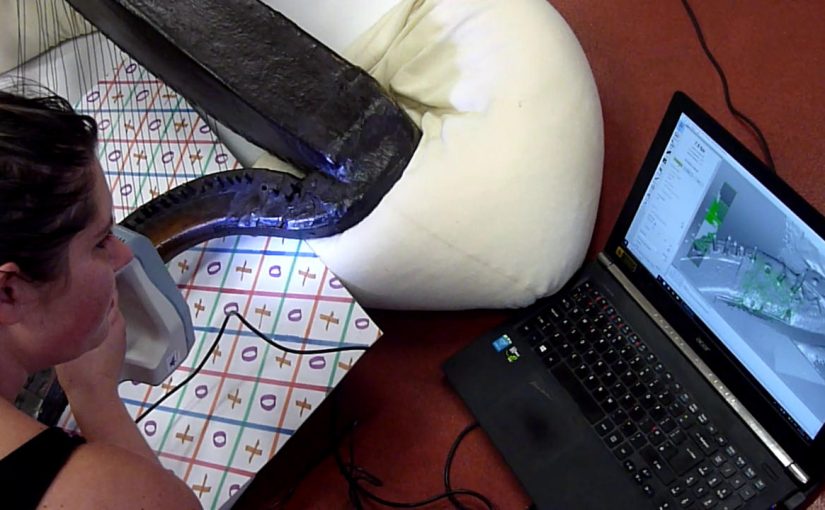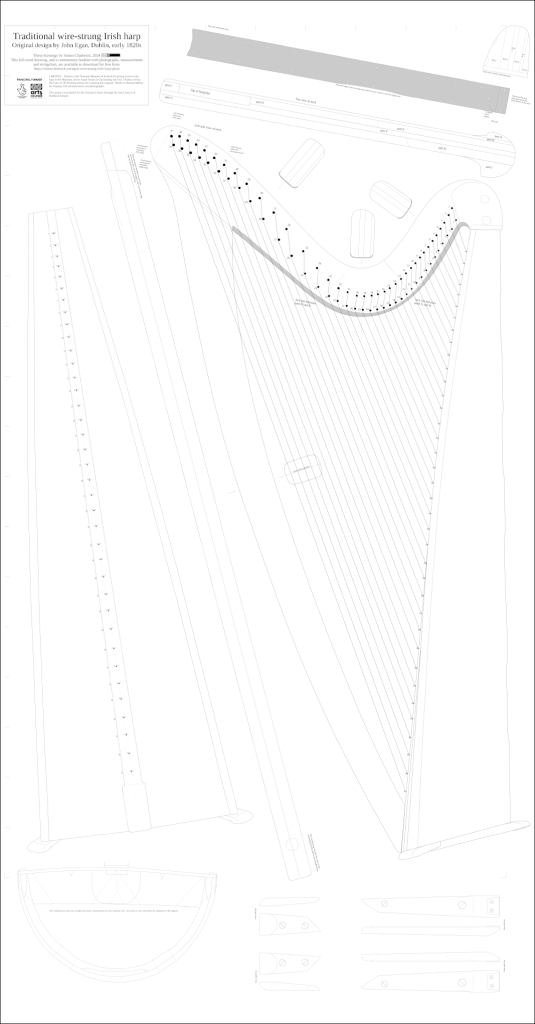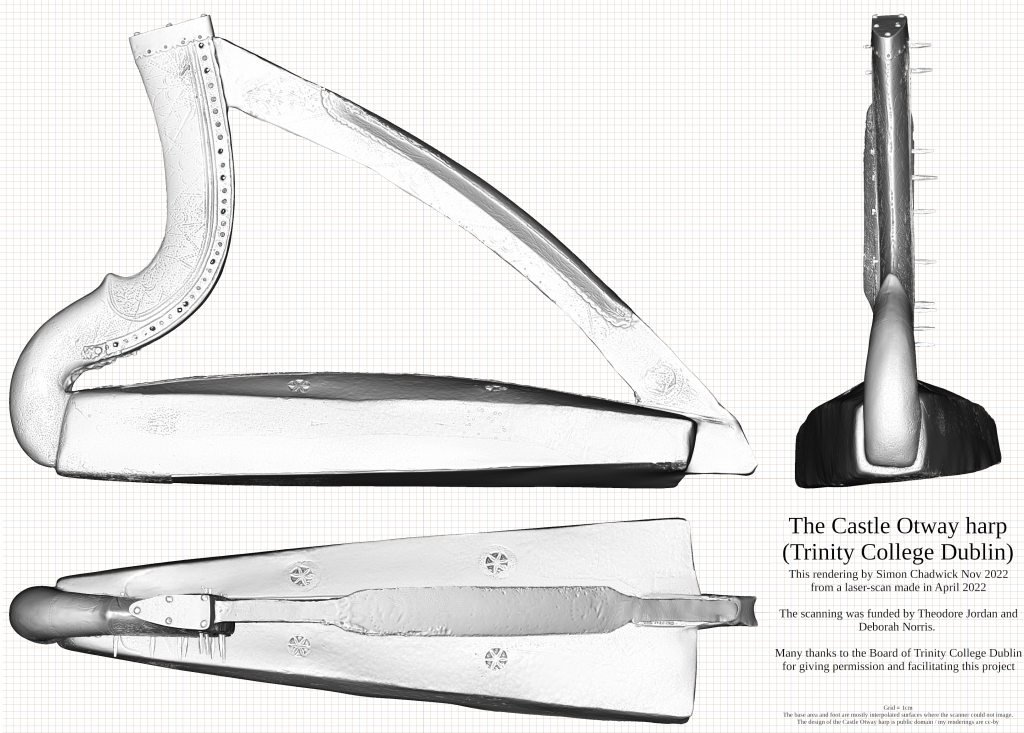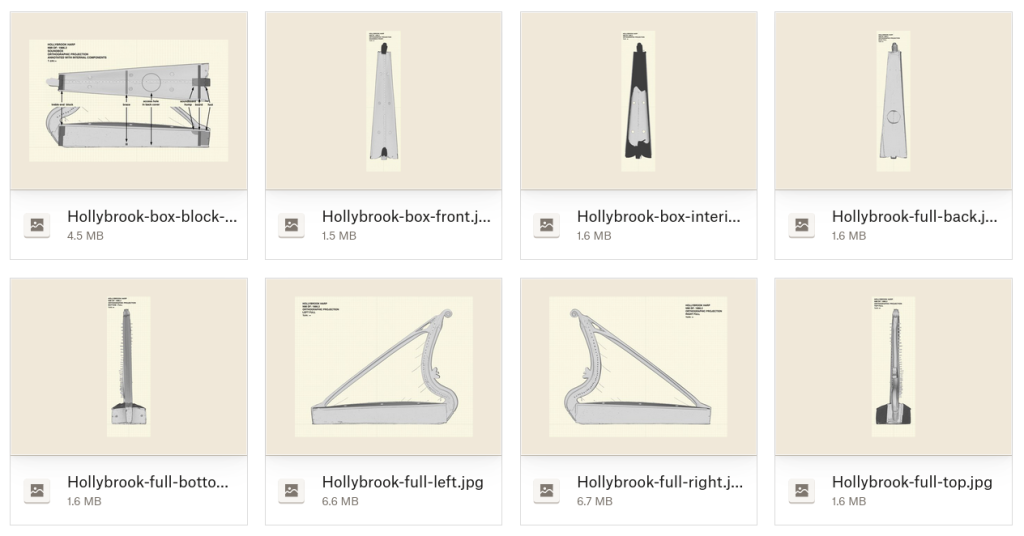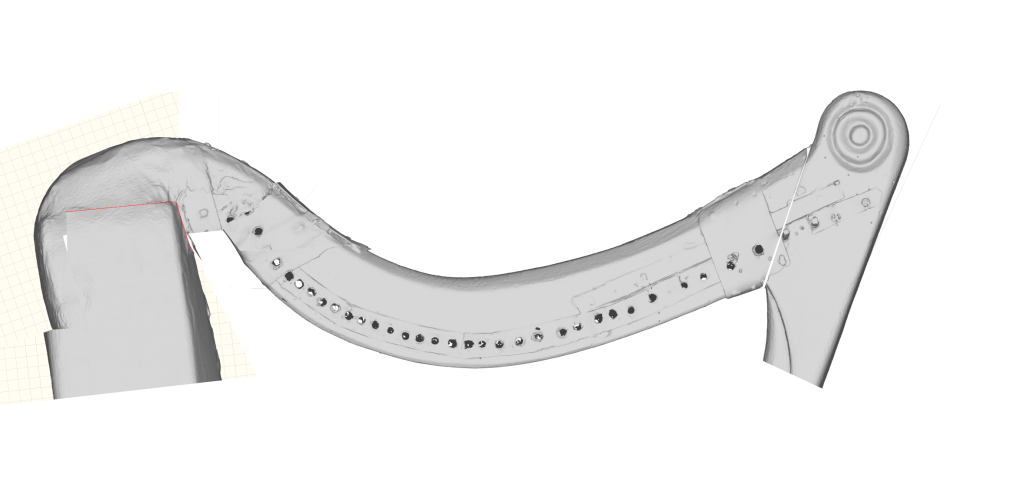This page gathers links and references to published information about the old Irish harps, plans, templates, and information about how they are made, which will be useful to harpmakers. See also my stringcharts.
I am very happy to be consulted on any aspects of the design of traditional wire-strung harps. The information on this page can also be very helpful to anyone who wants to order a harp from a harpmaker. I am always very happy to discuss the choices and options with you. Get in touch if you would like more information.
My focus is on trying to work out the design and specification for harps suitable for playing the traditional Irish harp repertory, using the traditional fingering techniques and playing style, as they were handed down by harpers in the inherited tradition through the 18th and 19th century.
As with any instrument-making, there is no substitute for seeing and handling as many good examples as possible. The best examples of old Irish harps are now almost all in museum collections, and so handling and access to them is naturally restricted. In recent years, highly detailed technical studies and 3D scans are becoming available, which can provide a substitute for hands-on access to the real thing. Good working instruments based on the traditional designs are now being made.

The different models of old Irish harp
From around the 1650s right through to the beginning of the 20th century, the inherited tradition of Irish harp playing used large harps with 30 or more brass wire strings. The harpers set the bottom of the harp on the floor, and sat themselves on a normal chair. The range of the harp seems to have usually gone down 2 octaves or more below middle C. These are the harps which parallel the older strands of living traditional music of fiddle, pipes and song. There are quite a few good models to use for making or commissioning a harp like this.
At the moment we are still trying to understand the constraints of the old inherited tradition, and making (or commissioning) a close copy of one of these old harps is the easiest way to guarantee your new harp will be usable for the traditional repertory and playing techniques.
Standardisation in the 19th century
The design and specifications of traditional wire-strung Irish harps was standardised in the 19th century by the harpmaker John Egan in Dublin. Egan made these big (153cm tall) 37-string harps for the tradition-bearers associated with the Irish Harp Society in Belfast. They have all the features you need for the traditional playing techniques and repertory and style, since they were designed and made for traditional harpers who had learned from 18th century tradition-bearers; they speak well; and in my opinion they are ideal for exploring the traditional Irish harp repertory. Their ergonomics and voicing conform to older Irish harp norms, but they have a more up-to-date aesthetic and method of construction. Their construction uses standard modern workshop practices and materials.

Once Egan had come up with this design in the 1820s, it was so successful that other harpmakers copied or adapted the design through the 19th century. Pretty much all of the traditional harpers after the 1820s played on this kind of harp; I have been writing up the harpers, and I have written discussions of harps associated with some of them, e.g. Patrick Byrne, Paul Smith, Hugh O’Hagan, Valentine Rennie, and Patrick Murney.
I am now recommending this design as the ideal harp for anyone wanting to learn to play the traditional wire-strung Irish harp, or for use in performance and recording.
John Egan harp plans
Early in 2024 I produced a set of plans and technical drawings to make a copy of one of the John Egan traditional wire-strung Irish harps, based on a 3D scan of one in the National Museum of Ireland.
The harp shown has 37 brass wire strings. The full-sized drawings show the side view and front view of all the parts, plus drawings and photographs of the interior structures.
The project to scan the original, and to produce the drawings, was funded by the Arts Council of Northern Ireland. The plans and drawings are available to download for free.
The 18th century tradition
Before Egan modernised and standardised the design of the traditional wire-strung Irish harp in the 1820s, the traditional harpers had been using much older styles of instrument. The 18th century Irish harps played by Carolan, Dennis Hempson, Arthur O’Neil and the other famous 18th century harpers were made using a much older set of workshop practices and design principles.
There has been quite a bit of work done on these 18th century Irish harps, and a number of them have been scanned and studied, and good working copies made.
Each of the 18th century harps is different, yet we can recognise common design elements which help to define this older period of the inherited tradition.
These 17th – 18th century harps are quirkier and less ergonomic than the 19th century designs, but each of them has great character.
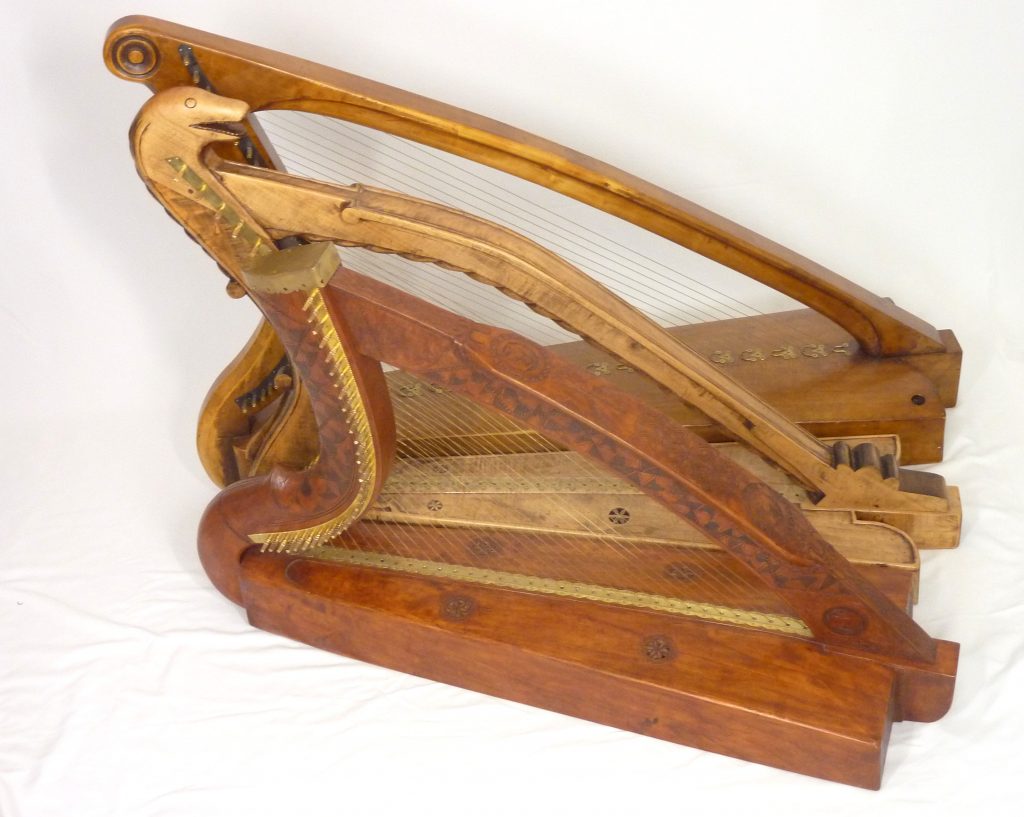
The Downhill harp
The Downhill harp is often considered a great model to copy; it is small, easily carried, and works very well and is easy to set up as a good working instrument. Also, its association with the traditional harper Dennis Hampson gives it an important cultural significance. On the other hand many people find it slightly too small to be ergonomic and comfortable.
However it has not been 3D scanned, and templates and data are not available. This means that any maker wanting to make a harp copying the design of the Downhill harp is on their own.
The Castle Otway harp
The Castle Otway harp is a very interesting instrument; it works like the other traditional 18th century instruments but it has a much older look or style. I think it is a less ergonomic harp, more difficult to hold and play, and lacking in the bass range which makes it speak less well than some of the others. But it has an important cultural significance because of its association with the traditional harper Patrick Quin, and because of its archaic appearance.
The Castle Otway harp was scanned in 2022, and I have made a set of plans and templates as a resource for harpmakers and researchers. They are all available on my Castle Otway Harp Plans page.
The Hollybrook harp
The Hollybrook harp is one of the best-documented of the 17th-18th century Irish harps. THe Hollybrook harp is very handsome, and it has a good low bass range. Its construction is also less problematical for modern workshops. But it is on the small size, which compromises the bass voicing and the ergonomics.
A full report on the Hollybrook harp by Karen Loomis and myself has been published on the HHSI website. The 3D scan is on Sketchfab; Karen has generated a full set of plans for the harp, and there is also a huge amount of other information and analysis about the harp and its construction, decoration etc.
The Kildare harp
Barbara Karlik is gradually publishing her data on the Kildare harp. You can download the 3D scan from Sketchfab, which is a great basis for you to generate templates, cross-sections, etc. Check her website for updates to this project. The Kildare is a very big and elaborately decorated harp.
The NMI Carolan harp
I studied the NMI Carolan harp, and wrote it up as a peer-reviewed paper: Simon Chadwick, ‘Provenance and recording of an eighteenth-century harp’, The Galpin Society Journal LXXIII, March 2020, p.85-110 & 199-201. Obviously its traditionary association with the traditional harper and composer and singer Turlough Carolan gives it great cultural significance even if that association cannot be proved at all.
There is a 3D scan which you can view online or download, and my (unsorted) processed templates which I generated from the scan are in Dropbox. All of this material has been released on an open license so you can use it and create your own derivative works freely without restrictions. This is a large and heavy harp. Mostly because of the damage and distortion, there are a number of issues with making a reconstruction copy of it. Get in touch if you want more information.
Other harps
The Mulagh Mast harp has been 3D-scanned, and the scan is available to view on Sketchfab, but templates and other data are not yet available.
Robert Bruce Armstrong’s book published in 1904 has some technical information about many of these old harps. I usually have a secondhand copy available for sale. It is also available online at the Internet Archive.
I think that commissioning 3D scans of the other 18th and 19th century harps would be very useful, because the scan can easily be used to generate accurate makers’ templates. Because the harps have subtle curving 3D shapes they can be very difficult to document by traditional measuring methods; the scan also allows the pins, strings, and shoes to be laid out very accurately following the original. Get in touch if you would be interested in sponsoring the cost of a scan. The more information that gets published, the more we understand how the old harps are designed and made and used…

Looking further back in time…
I often get asked about the medieval Irish and Scottish Gaelic harps. I have done a lot of work on these based on my background as an archaeologist.
I don’t think the medieval harps are useful or relevant for understanding the inherited tradition as it came down to us through the 18th and 19th century tradition-bearers. You would not start learning traditional Scottish or Irish pipes by using a set of medieval pipes; you would not start learning traditional Irish fiddle by using a medieval fiddle, and so it does not make sense to me to start learning traditional Irish wire-strung harp by using a medieval harp.
But I know that some people are interested in medieval re-creationism, and in playing medieval music on medieval instruments, and so I have made a separate page with information about the medieval Scottish and Irish harps.
